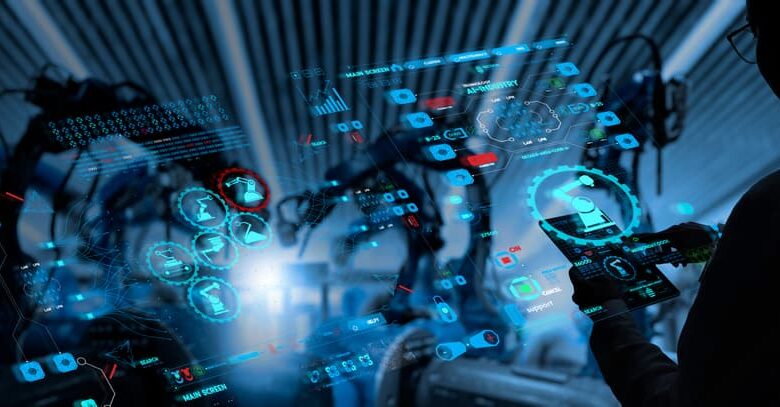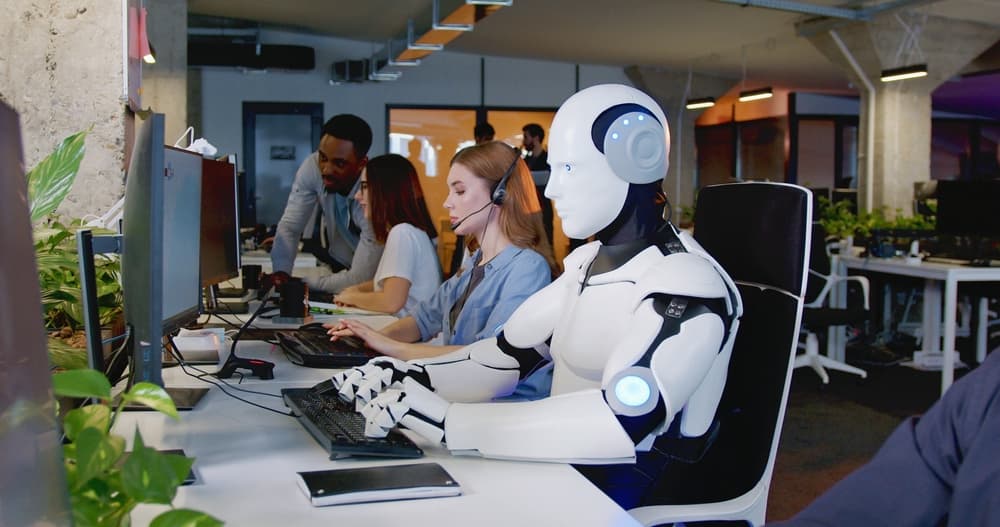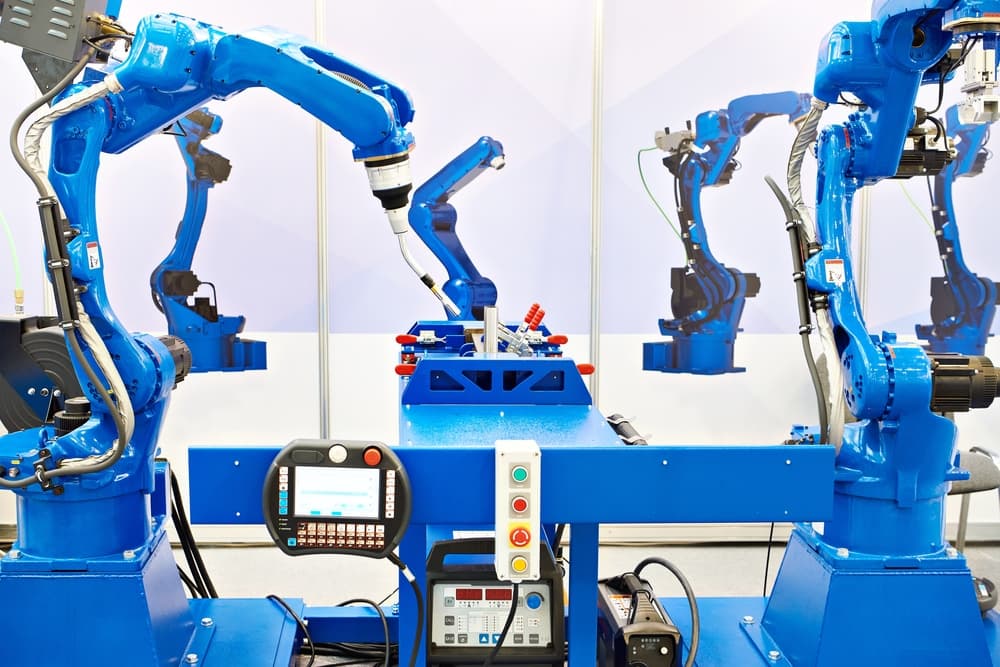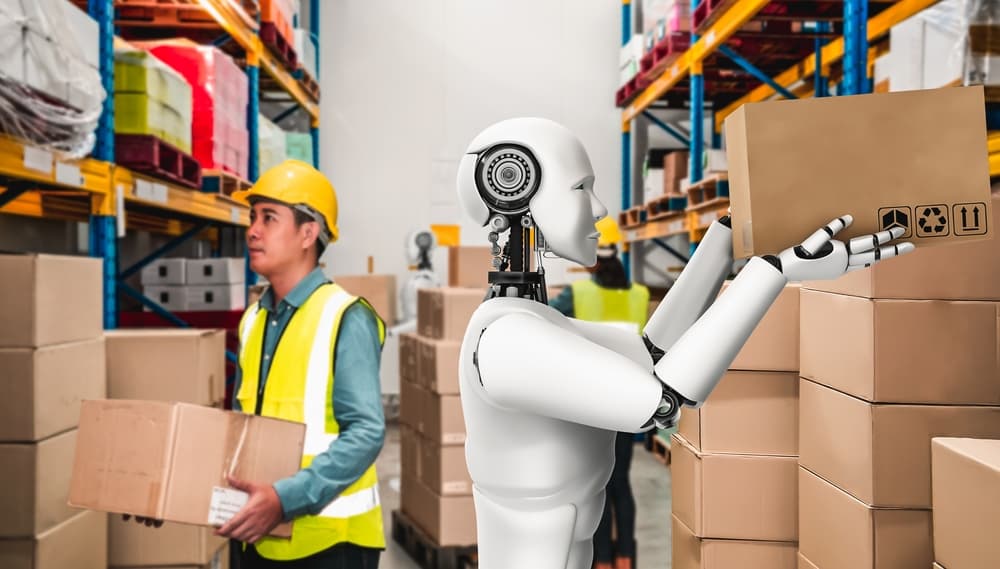
The manufacturing industry is on the cusp of a major disruption. The rise of automation and computer-integrated manufacturing (CIM) is poised to transform the way we produce goods and services.
In this comprehensive overview, we will explore the in this article of automation production systems and computer integrated manufacturing:
- Automation Production Systems
- Components of an automation production system:
- The Automation Revolution: A Double-Edged Sword
Automation Production Systems
A. Overview of automation in manufacturing
Automation in manufacturing is the use of technology to control and monitor production processes. It can help to improve efficiency, productivity, and safety. There are three main types of automation in manufacturing: fixed automation, programmable automation, and flexible automation.
we can say that:
- The future of manufacturing is automated, and the future of automation is bright.
- Automation is the driving force behind the manufacturing revolution.
Have you ever wondered how the products you use every day are manufactured? From smartphones to cars, automation systems play a key role in mass production, ensuring unparalleled efficiency and precision.
Join us on a journey through the world of automation systems, where we will explore its three main types: fixed automation, programmable automation, and flexible automation.
1. Fixed Automation: Robots Dedicated to a Single Task

Imagine a robot working tirelessly to produce the same item repeatedly with incredible accuracy. This is the essence of fixed automation, where systems are designed to perform a predetermined task.
Examples:
- Car assembly lines
- Beverage filling machines
- Pharmaceutical manufacturing machines
Advantages:
- High efficiency: Production speed is very high with extreme precision.
- Low cost: Production cost per unit is low due to mass production.
- High quality: Products are manufactured with the same specifications with high accuracy.
Disadvantages:
- Low flexibility: The system cannot be easily changed to produce other products.
- High initial cost: Fixed systems require large upfront investments.
- Difficult changes: Any changes in design or production require expensive modifications.
2. Programmable Automation: Artificial Intelligence for Diverse Production

What if you wanted a system that could produce a variety of products? This is where programmable automation comes in, as systems can be reprogrammed to change their functions.
Examples:
- Multi-task industrial robots
- CNC machines
- Programmable welding systems
Advantages:
- High flexibility: The system can be easily changed to produce different products.
- Good efficiency: Production speed is high with good quality.
- Adaptability to changes: The system can be easily modified to meet new production needs.
Disadvantages:
- Higher cost: The cost of programmable systems is higher than fixed systems.
- Greater complexity: These systems require specialized programming skills.
- Programming time: It takes time to program the system for each new product.
3. Flexible Automation: Artificial Intelligence Adapting to Changes

In our article on automation production systems and computer integrated manufacturing, We will now discuss Flexible Automation.
With flexible automation, productivity enters a new realm. These intelligent systems adapt to changes in production automatically, providing maximum efficiency and flexibility.
Examples:
- Smart manufacturing systems
- Flexible work cells
- Collaborative robots
Advantages:
- Exceptional flexibility: The system can adapt to any changes in demand or design.
- High efficiency: Production speed is high with high quality.
- Error reduction: The system significantly reduces human errors.
Disadvantages:
- Very high cost: Flexible systems require huge investments.
- Immense complexity: These systems require advanced skills in software engineering and artificial intelligence.
- Maintenance challenges: The systems require specialized and continuous maintenance.
Components of an automation production system:
In our article on automation production systems and computer integrated manufacturing, We will now discuss Components of an automation production system:
1. Sensing and actuation devices:
- Sensing devices collect data about the environment, such as temperature, pressure, and position.
- Actuation devices convert electrical signals into physical movement, such as opening and closing valves or moving robotic arms.
2. Control systems:
- Control systems use feedback from sensors to control the operation of actuators.
- They can be implemented using various technologies, such as programmable logic controllers (PLCs), distributed control systems (DCSs), and computer numerical control (CNC) machines.
3. Communication networks:
- Communication networks allow different components of the automation system to communicate with each other.
- They can be wired or wireless and use various protocols, such as Ethernet, Modbus, and Profibus.
4. Human-machine interface (HMI):
- The HMI allows human operators to interact with the automation system.
- It typically consists of a display and input devices, such as a keyboard or touchscreen.
5. Robotics and robotic systems:
- Robots are used to perform tasks that are dangerous, repetitive, or require high precision.
- They can be integrated into automation systems to perform various tasks, such as welding, painting, and assembly.
These components work together to create a flexible and efficient production system that can meet the needs of a variety of industries.
additional points to consider:
Automation systems can be tailored for full or partial automation, depending on factors like cost, task complexity, and safety needs. This adaptability, along with improved productivity, quality, and safety across industries, makes automation a powerful tool for modern production.
Imagine a factory where machines talk to each other, robots dance in harmony, and products flow seamlessly from design to delivery. This is the world of Computer-Integrated Manufacturing (CIM), a symphony of automation that revolutionizes production.
CIM is like a well-conducted orchestra, with each component playing a vital role:
- Computer-Aided Design (CAD) is the maestro, crafting digital blueprints of products.
- Computer-Aided Manufacturing (CAM) translates those designs into machine instructions, directing the production flow.
- Computer-Aided Engineering (CAE) is the analyst, simulating and optimizing designs before physical creation.
- Manufacturing Execution Systems (MES) is the conductor, overseeing real-time production, scheduling, and resource allocation.
- Enterprise Resource Planning (ERP) is the manager, integrating all company functions, from finance to inventory, for seamless operation.
These components communicate seamlessly, sharing data and information through a robust network. This symphony of data allows for real-time decision-making, optimized production, and improved quality.
CIM is not just a futuristic concept; it’s a reality that’s already transforming industries worldwide. From automotive to aerospace, companies are embracing CIM to boost efficiency, productivity, and innovation.
So, if you’re looking for a glimpse into the future of manufacturing, look no further than CIM. It’s a world where machines and humans work together in perfect harmony, creating products that are both innovative and efficient.
Here are some additional benefits of CIM:
- Reduced costs: CIM can help to reduce manufacturing costs by automating processes and eliminating waste.
- Improved quality: CIM can help to improve product quality by ensuring that products are manufactured to precise specifications.
- Increased productivity: CIM can help to increase productivity by automating tasks and reducing the time it takes to manufacture products.
- Enhanced flexibility: CIM can help to make manufacturing processes more flexible, allowing companies to respond quickly to changes in demand.
- Improved safety: CIM can help to improve safety in the workplace by automating dangerous tasks.
The Automation Revolution: A Double-Edged Sword
In our article on automation production systems and computer integrated manufacturing, We will now discuss The Automation Revolution.
Manufacturing is undergoing a dramatic shift, driven by the rise of automation and Computer-Integrated Manufacturing (CIM). While these advancements offer incredible benefits, challenges remain to be addressed.
A. The Allure of Automation:
- Boosting Productivity: Imagine a factory buzzing with efficiency, churning out products faster and more consistently. Automation unlocks this reality, freeing human workers from repetitive tasks.
- Quality on Autopilot: Automation minimizes human error, leading to a noticeable uptick in product quality and consistency. No more Monday morning blues impacting production!
- Safety First: Repetitive or hazardous tasks become the domain of robots, significantly reducing the risk of workplace injuries. Humans can focus on higher-level tasks, keeping everyone safe.
- Cost Cutters: Automation streamlines processes, reduces waste, and optimizes resource allocation. This translates to significant cost savings, allowing businesses to invest in further growth.
B. The Symphony of CIM:
CIM takes automation a step further, creating a seamlessly integrated system. It’s like a well-oiled orchestra, where each component plays a crucial role:
- Streamlined Workflow: CIM breaks down silos between design, manufacturing, and other departments. Information flows freely, creating a smooth production process from concept to completion.
- Speed to Market: With everything in sync, companies can get products to market faster, capitalizing on fleeting trends and customer demands. No more waiting months for that must-have gadget!
- Data-Driven Decisions: Real-time data from every stage of production becomes readily available. This empowers businesses to make informed decisions that optimize efficiency and quality.
- Supply Chain Harmony: CIM connects seamlessly with suppliers, ensuring raw materials arrive just in time and inventory levels are optimized. Gone are the days of production delays due to missing parts!
C. The Obstacles on the Path:
While automation and CIM offer significant benefits, they also present challenges:
- The Price of Progress: Implementing automation and CIM can require a hefty initial investment in hardware, software, and system integration. Patience is key – the long-term benefits outweigh the upfront costs.
- The Integration Tango: Getting various systems to talk to each other can be a complex dance. Compatibility issues and data silos can create roadblocks, requiring careful planning and skilled engineers.
- Reskilling the Workforce: Automation may displace some jobs, requiring workers to be upskilled or reskilled. Investing in training programs ensures a smooth transition and empowers the workforce to work alongside automation.
- The Digital Shield: Increased reliance on technology brings cybersecurity risks. Robust data security measures are crucial to protect sensitive information and prevent disruptions.
Read about: Advantages and disadvantages of SEO in digital marketing
(FAQs) For automation production systems and computer integrated manufacturing
1. What industries benefit the most from automation and CIM?
Industries heavily relying on repetitive tasks, precision, and high production volume tend to see the most significant benefits from automation and CIM. These include:
- Automotive
- Electronics
- Food and Beverage
- Pharmaceuticals
- Chemicals
Generally, any sector where consistent quality, speed, and efficiency are crucial can potentially benefit from implementing automation and CIM.
2. How does automation impact employment in manufacturing?
Automation can lead to job displacement in some areas of manufacturing, particularly for repetitive tasks previously performed by humans. However, it can also create new opportunities in areas like:
- System design and maintenance
- Programming and robotics
- Data analysis and quality control
The overall impact on employment can be complex and depends on various factors like the pace of automation adoption, worker retraining programs, and the creation of new jobs in other sectors.
3. What are the key factors to consider when implementing automation and CIM?
Several factors need to be considered before implementing automation and CIM:
- Cost-benefit analysis: Evaluating if long-term cost savings and productivity gains will outweigh the upfront investment.
- Scalability: Choosing a system that can adapt to future growth and changing production needs.
- Workforce impact: Assessing how automation will affect employees and planning for potential retraining programs.
- Technical expertise: Ensuring there are skilled personnel to operate and maintain the automated systems.
4. Can automation and CIM be implemented in small and medium-sized enterprises (SMEs)?
Yes, automation and CIM solutions are becoming increasingly accessible for SMEs. Advancements in technology have led to:
- More affordable automation systems
- Modular and scalable solutions
- Cloud-based software and services
These developments allow SMEs to automate specific processes and gradually integrate CIM elements without a massive initial investment.
5. What are the emerging trends in automation and CIM?
The field of automation and CIM is constantly evolving. Here are some key trends:
- Industrial Internet of Things (IIoT): Connecting machines and devices to gather real-time data for improved process optimization and predictive maintenance.
- Artificial intelligence (AI) and machine learning (ML): Automating tasks requiring complex decision-making and data analysis.
- Collaborative robots (cobots): Robots designed to work safely alongside humans in shared workspaces.
- Digital twins: Creating virtual models of physical systems to simulate and optimize production processes.



